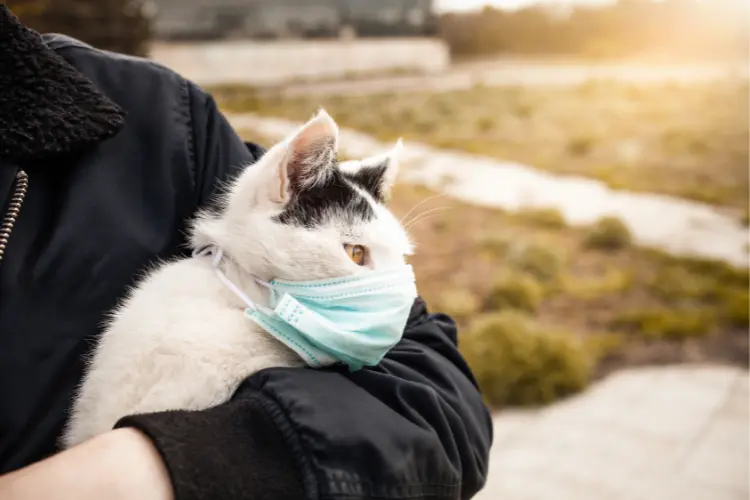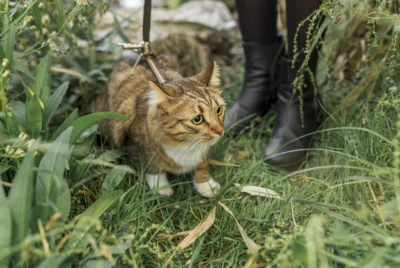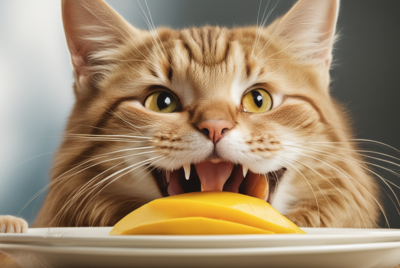When To Euthanize A Cat With Seizures? A Guide for Pet Owners
The thought of euthanizing a beloved cat can be daunting and heart-wrenching. Understanding seizures in cats, their causes, and the various treatment options available can help cat owners make more informed decisions about their pet’s well-being. So, this comprehensive guide will provide valuable insights into when to euthanize a cat with seizures and how to approach this difficult decision with empathy and understanding.
Understanding Seizures in Cats
Seizures in cats are neurological events caused by abnormal electrical activity in the brain. Seizures can have a range of symptoms including:
- muscle spasms
- twitching
- rigidity
- loss of consciousness
These physical manifestations of seizures can be varied in nature. While seizures themselves don’t significantly increase the mortality risk for cats, vigilant monitoring of the pet’s condition and timely veterinary consultation are important.
Uncovering the root cause of a seizure is vital. Although the seizure may seem innocuous, the underlying cause could potentially lead to life-threatening health issues for your cat.
To better understand and manage seizures in cats, it is important to familiarize oneself with their causes and types. Knowledge of the different types of seizures will help cat owners identify the most appropriate course of action for their feline friends.
Causes of Cat Seizures
Cat seizures can be caused by various factors, including epilepsy, primary brain tumors, infections, trauma, and exposure to toxins. Identifying the cause of your cat’s seizures is vital, as the root cause could be life-threatening.
Seizures can have several underlying causes, including pathological issues, medications, head trauma, and ingestion of human medications. Such causes can be seen in certain cases.
Moreover, hyperthyroidism, cardiovascular illness, diabetes and kidney failure are commonly known medical conditions. These medical issues can be classified as sources of certain illnesses. Should your cat frequently endure multiple seizures, I recommend obtaining medical assistance for identifying potential underlying health disorders, such as feline infectious peritonitis.
Cat owners must relay any recent behavioral or health changes to their vet that could shed light on the impact of seizures on their cat. Uncovering the root cause of seizures can help determine the most appropriate course of action for your cat, whether it be through medical management, dietary changes, or alternative therapies.

Types of Seizures
Cats can suffer from a variety of seizures. Each seizure has unique symptoms and levels of intensity. The most common types of seizures in cats are:
- Generalized seizures, or grand mal seizures, affect the entire body and can cause loss of consciousness, muscle spasms, and rigidity.
- Focal seizures, on the other hand, affect only a specific part of the brain and may result in subtle movements of the ears, mouth, and eyes.
- Cluster seizures, which involve multiple seizures occurring in a short period of time.
It is important to consult with a veterinarian if your cat experiences seizures, as they can help determine the underlying cause and provide appropriate treatment.
Also, cluster seizures refer to the occurrence of multiple cat’s seizures within a short period, which can be particularly concerning for cat owners.
Recognizing the type of seizure your cat is experiencing is essential in determining the best course of action and treatment plan, as it could be related to various causes, including a brain tumor. Frequent or severe seizures, like cluster seizures, should be closely monitored and discussed with a veterinarian.
Assessing Your Cat’s Quality of Life
Evaluating your cat’s quality of life is critical to deciding the necessity of euthanasia, considering factors like pain, daily activity performance, and emotional state.
A diminished quality of life in cats with seizures may include a reduced capability to carry out daily activities, increased pain and suffering, or significant psychological distress. Various aspects should be considered when determining whether euthanasia is necessary for a cat with seizures, such as the cat’s quality of life, ability to carry out daily activities, emotional state, and the financial and emotional impact on the pet owner.
Additionally, the capacity to execute everyday tasks is the most essential factor to consider when determining whether to put a cat with seizures to sleep. In some cases, euthanasia may be the most compassionate choice for both the cat and the cat owner.
Signs of Suffering
Recognizing the signs of suffering in cats with seizures is crucial in making informed decisions about their well-being and the potential need for euthanasia. Indications that a cat with seizures may be suffering can include:
- Signs of distress
- Reduced activity
- Alterations in behavior
- Changes in vocalization
- Hesitation to move
- Reduced appetite
- Strange behavior
These signs could signify that cats having seizures are in pain, potentially due to severe physical trauma. For providing appropriate care, monitoring these signs is important.
Cats suffering from seizures may display signs of lethargy, decreased movement, and a lack of interest in their environment.
Additionally, they may appear weak and have difficulty walking or standing. During a seizure, a cat may display signs of distress, such as vigorous trembling of all four limbs, mastication and/or facial twitching, abrupt bursts of activity, belligerence, perplexity, and disorientation.

Medical Management of Seizures
Medical management for cats suffering from seizures can involve medications, dietary changes, and alternative therapies to help control and reduce seizure frequency and severity.
The treatment choice depends on the underlying cause of the seizures and the individual cat’s response to the treatment. In some cases, medication can be a viable option for controlling seizures, depending on the underlying cause.
Medications
Phenobarbital is the most effective anticonvulsant medication for cats with seizures. It is the drug of choice for cats with recurrent seizures without a metabolic cause and should be administered twice daily.
Diazepam and potassium bromide can also be used in conjunction with phenobarbital for managing seizures in cats. Phenobarbital works by decreasing the activity in the brain cells (neurons) that cause seizures.
It is a barbiturate medication that encourages certain chemical messengers to reduce and stabilize activity in the brain, thus decreasing the chance of seizures in cats.
Potential side effects of levetiracetam in cats may include:
- Reduced appetite
- Excessive drooling
- Lethargy
- Ataxia
Reports of mild transient ptyalism, inappetence, mild lethargy, and ataxia have also been documented. However, serious adverse effects appear to be rare.
Also, the effectiveness of the medication is dependent on the specific medication and the individual cat’s response to it. Working closely with your veterinarian to ascertain the most suitable medication and dosage for your cat is crucial.
Dietary Changes
Dietary changes, such as a ketogenic diet, may help reduce seizures in some cats. A ketogenic diet for cats with seizures is a high-fat, low-carbohydrate diet.
This diet has been observed to be beneficial in reducing seizures in some cats by generating ketone bodies that impact neuronal function and can reduce the frequency and intensity of seizures.
Additionally, a ketogenic diet for cats with seizures should include high-protein, very low-carb foods. Some suitable options include homemade meat-based foods, low-carb/grainless canned foods, and frozen raw diets.
Before making any significant changes to your cat’s diet, it’s vital to consult your veterinarian to fulfill their nutritional needs and prevent any potential side effects.
Alternative Therapies
Alternative therapies such as acupuncture or herbal supplements may relieve some cats with seizures, however, it is important to consult a veterinarian before attempting new treatments to treat seizures. Acupuncture has demonstrated efficacy in treating cat seizures by enhancing electroencephalogram and diminishing spike wave activity. It is a straightforward, effective, and secure complementary therapy for epilepsy.
I recommend valerian root, skullcap, passionflower, and omega-3 fatty acids as herbal supplements for treating cat seizures. Some safe, natural remedies for cat seizures include herbal tinctures, homeopathic remedies, and CBD oil.
Nonetheless, before trying any natural remedies for seizures in cats, consulting with a veterinarian is essential to prevent potential side effects or interactions with other medications.
When Euthanasia May Be Necessary
Euthanasia may be necessary for cats with unmanageable seizures, poor quality of life, or when all other treatment options have been exhausted.
If the cat’s seizures are severe and have a poor prognosis, euthanasia may be an appropriate option. Additionally, if the seizures are due to a fatal underlying condition, euthanasia may be a suitable option.
Before deciding on euthanasia, considering several factors is crucial, including the cat’s quality of life, daily activity performance, emotional state, and the financial and emotional impact on the pet owner.
Lastly, deciding to euthanize a cat with seizures should be given profound consideration.It is an extremely serious matter. I recommend seeking professional advice from a veterinarian. They can provide valuable information and guidance to help you make the best decision for your cat’s well-being.
Euthanasia Process and Options
Euthanasia can be performed in the comfort of your own home or at a veterinary clinic, depending on your preference and your cat’s needs. Both options aim to provide a peaceful and comfortable environment for your cat’s final moments.
We will further explore the advantages and procedures of both in-home and veterinary clinic euthanasia.
In-Home Euthanasia
In-home euthanasia allows your cat to pass away in a familiar and comfortable environment, benefiting both the cat and the owner. The process of in-home euthanasia for cats typically involves:
- Administering a sedative and pain medication to allow the cat to relax into a deep sedation.
- Followed by a second injection, which is the euthanasia medication, to bring about a peaceful and painless end to the cat’s life.
- The cat will pass away in their sleep, providing a gentle and compassionate experience.
During in-home euthanasia, the veterinarian will:
- Explain the euthanasia process and their protocol, providing an overview of what to expect.
- Allow time for you to ask questions, seek clarification, or express any concerns you may have.
- Administer a barbiturate solution, usually through a vein, to ensure a peaceful passing.
- Monitor your pet’s vital signs and ensure that they are comfortable throughout the process.
- Guide aftercare options, such as cremation or burial.
Veterinary Clinic Euthanasia
Veterinary clinic euthanasia involves sedation and lethal injection, providing a humane and peaceful passing for your cat. The necessary preparations for a veterinary clinic euthanasia for a cat with seizures may include:
- Selecting the location
- Confirming the availability of appropriate medications
- Consulting the veterinarian regarding the procedure
- Adhering to any relevant instructions
The cat is administered a sedative before a lethal injection, and in most cases, death is prompt and without discomfort.
Sedation facilitates the cat’s relaxation and comfort before the euthanasia procedure. The consent form confirms that the owner has agreed to the procedure of euthanasia.
It is important to ensure all family members agree and have the necessary support during this difficult period. Giving them their favorite items, like a cozy blanket, a beloved toy, or a special treat, can provide comfort at this difficult time. This may help them feel secure and relaxed in their last moments.

Aftercare and Memorialization
Aftercare and memorialization options can help pet owners cope with the loss of their cat and honor their memory. The upcoming sections will cover different aftercare options for euthanized cats and methods to memorialize your beloved pet, providing guidance and support in this challenging time.
Aftercare Options
Aftercare options for an euthanized cat include burial or cremation, with guidance provided by the veterinarian.
The available post-mortem care options for cats that have been euthanized include cremation, burial, and home burial.
Cremation is generally the safest and most preferred option. Burial can be conducted at a pet cemetery or at home, depending on the local regulations.
Veterinarians can provide the following services and support to pet owners:
- Information and guidance on what to do with their pet’s remains
- Options for cremation or burial services
- Resources for grief support
- In-home euthanasia services create a more compassionate and peaceful experience for both the cat and the owner.

Memorializing Your Cat
Memorializing your cat can involve creating a memorial, sharing their story, or participating in support groups to help cope with the loss.
Creating a memorial can be a meaningful way to honor your cat’s memory and provide a comforting reminder of the love and companionship you shared.
This can be done through creating a dedicated space in your home or garden, with a special photo, keepsake, or personalized memorial stone.
Sharing your cat’s story can provide a sense of connection and understanding in coping with its loss. Expressing your feelings and experiences with those who have also experienced a similar loss can make you feel less isolated and help you remember the positive times and special moments you shared with your cat. Hearing stories from others can also provide comfort and validation.
Joining support groups after the loss of a feline friend can offer numerous advantages, including:
- A sense of togetherness and understanding from others who have undergone comparable loss
- Emotional backing and recognition of emotions
- A secure place to share anecdotes and recollections of the cat
Read also: Symptoms of Dead Kitten Inside Cat
Frequently Asked Questions
How many seizures is too many for a cat?
It is important for cats having more than one seizure every six to eight weeks to receive treatment, even if the cause is not understood.
What is the life expectancy of a cat with epilepsy?
The life expectancy of a cat with epilepsy depends on the severity and frequency of seizures, and whether they are able to be managed with medication. Generally, epileptic cats have a good prognosis if the condition can be treated, while those that do not respond to drugs may still lead happy lives.
Do cats suffer when they have seizures?
Cat seizures can look dramatic, but the animal is usually not in pain. While seizures can occur for various reasons, they typically only last a few minutes and require some time for your cat to recover afterwards.
How do you know when it is time to put your cat down?
When your cat is no longer interested in routine activities, has a weakened physique, an illness or mobility problems, it may be time to consider euthanizing as the kindest option.
How do seizures affect a cat’s quality of life?
Seizures can cause significant pain and distress, reducing a cat’s ability to carry out daily activities and impacting its quality of life.
Summary
Understanding seizures in cats, their causes, and various treatment options can help cat owners make more informed decisions about their pet’s well-being. Assessing your cat’s quality of life, recognizing signs of suffering, and exploring medical management options are all essential steps in determining whether euthanasia is necessary.
In the end, the decision to euthanize a cat with seizures should be made with compassion, empathy, and a thorough understanding of all available options. By following this comprehensive guide, cat owners can navigate this difficult time with confidence and ensure their beloved pet’s final moments are peaceful and dignified.




